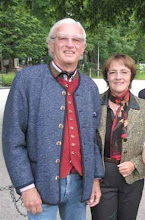Restrepo, 2010, a film by Sebastian Junger and Tim Hetherington.
Reviewed for Peacehawks by Jamie Arbuckle
It is a characteristic of our very advanced communications media that the medium is often not the message, and sometimes contains almost no message at all. This film is one such non-message.
The intention of the film seems to be to accompany the book, War, by Sebastian Junger. Junger is a skilled writer with a strong sense of contemporary history and is well known for his narrative skills, both of which are amply displayed in his book. War presents the operations of Battle Company, 2nd Parachute Infantry Battalion of the 173rd Airborne Infantry Brigade in the Korengal Valley of Afghanistan from May 2007 to July 2008. (The other companies in the Battalion are called “Chosen ” and “Destined” – the irony, as in so much of the terminology used here, is certainly unintentional.) In particular, the movie tells inter alia the story of the Second Platoon of Battle Company in combat outpost Restrepo, which was named for a very popular medic, Juan Restrepo, and which was established shortly after he was killed in action in Afghanistan
The film is of necessity not particularly deep, indeed there is almost no analysis at all. That is perhaps as it should be; the events should speak for themselves. Unfortunately, while being extremely realistic in the presentation of infantry combat, the only thing that really comes across fully here is the proverbial fog of war. This is perhaps the real, even if unintended message: nobody knows WHAT they are doing, much less WHY they are in Afghanistan United States endured the worst government in North America since George II (of Hannover, not Texas
Early in the film, the Company Commander tells us that, prior to deployment, he read nothing, no books, no reports, of the area or of the conflict: “I wanted to come here with an open mind.” What he in fact brings to Afghanistan
The denouement of this film comes with a pointless and botched operation called Rock Avalanche, an attempt to clear the Taliban from the Yaka Chine Valley
Long after the event, the company commander emerges briefly from professional lockjaw to muse on this paradox, but he comes to no conclusions - and how could he, a still-serving officer of the United States Army? His mind, apparently, is still open.
The Hescos - huge wall-shaped wire baskets filled with earth and rocks (see http://www.hesco.com/enter.html) - are perhaps also unintentionally symbolic of futility. In places over two metres high, and usually without the firing ports or steps of WWI trenches, and without overhead cover, they are predicated on an enemy with neither an air force (not yet) nor indirect fire weapons (they have mortars), The soldiers when under fire can only crouch behind them, and must expose themselves in order to return fire. On leaving Korengal, the soldiers gleefully and appropriately tip them over to fall into the valley below. Just before that, one of the soldiers writes his name in ball point pen on the wall of a Hesco. A fitting memorial?
The Korengal Valley
For those who have read the book, this film will add nothing. For those who have not read the book, the film will only confuse – which is perhaps the only authentic message to be presented here.
A much better presentation of essentially the same issues has been done by the New York Times, relating the experiences of a company of the 10th Mountain Division in Afghanistan


No comments:
Post a Comment